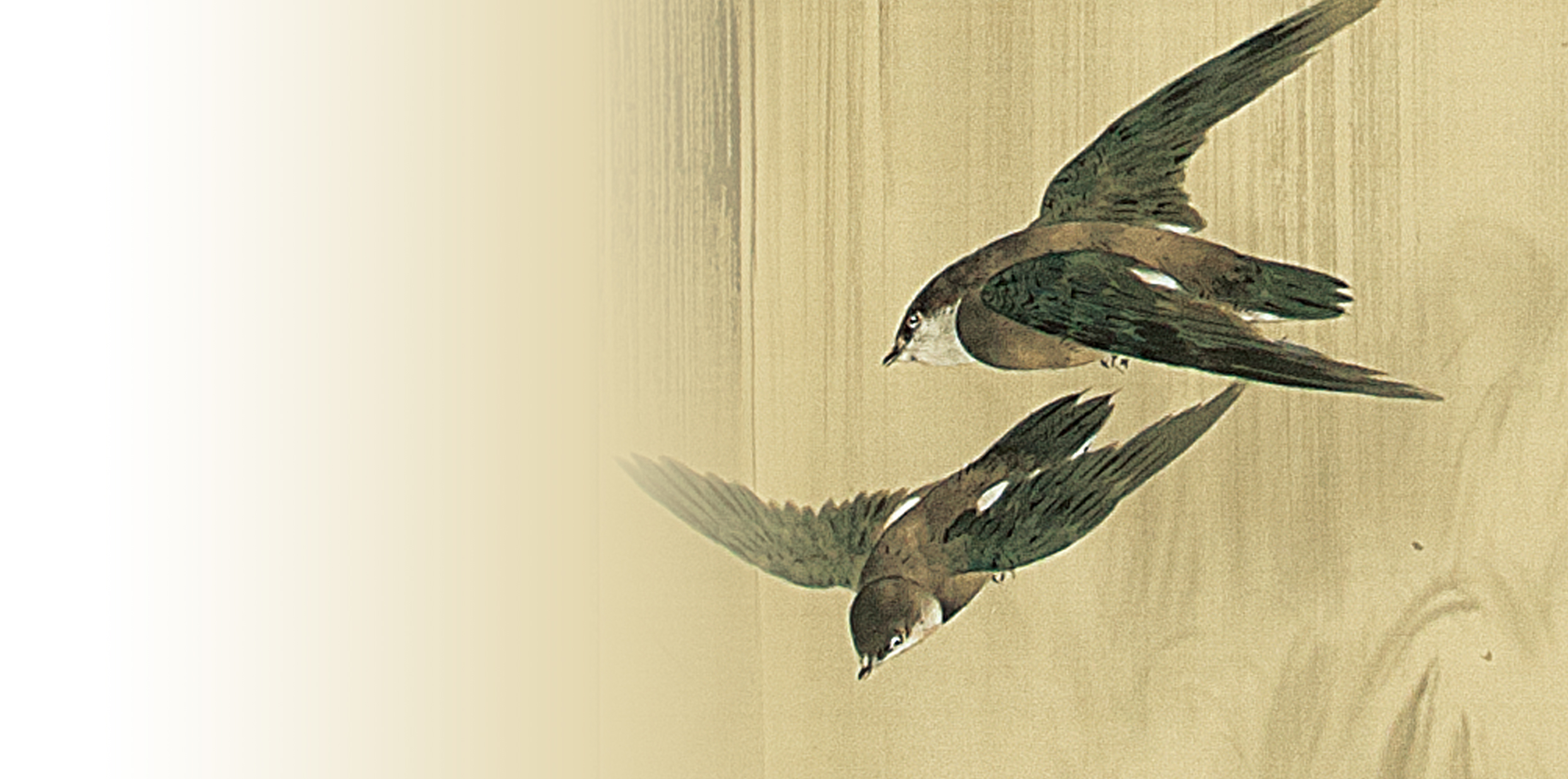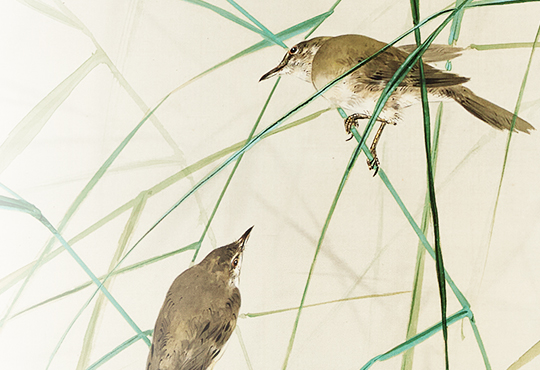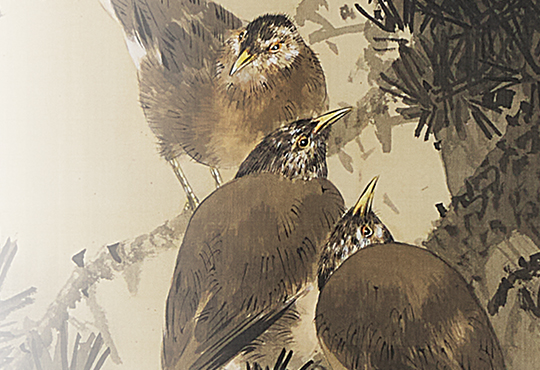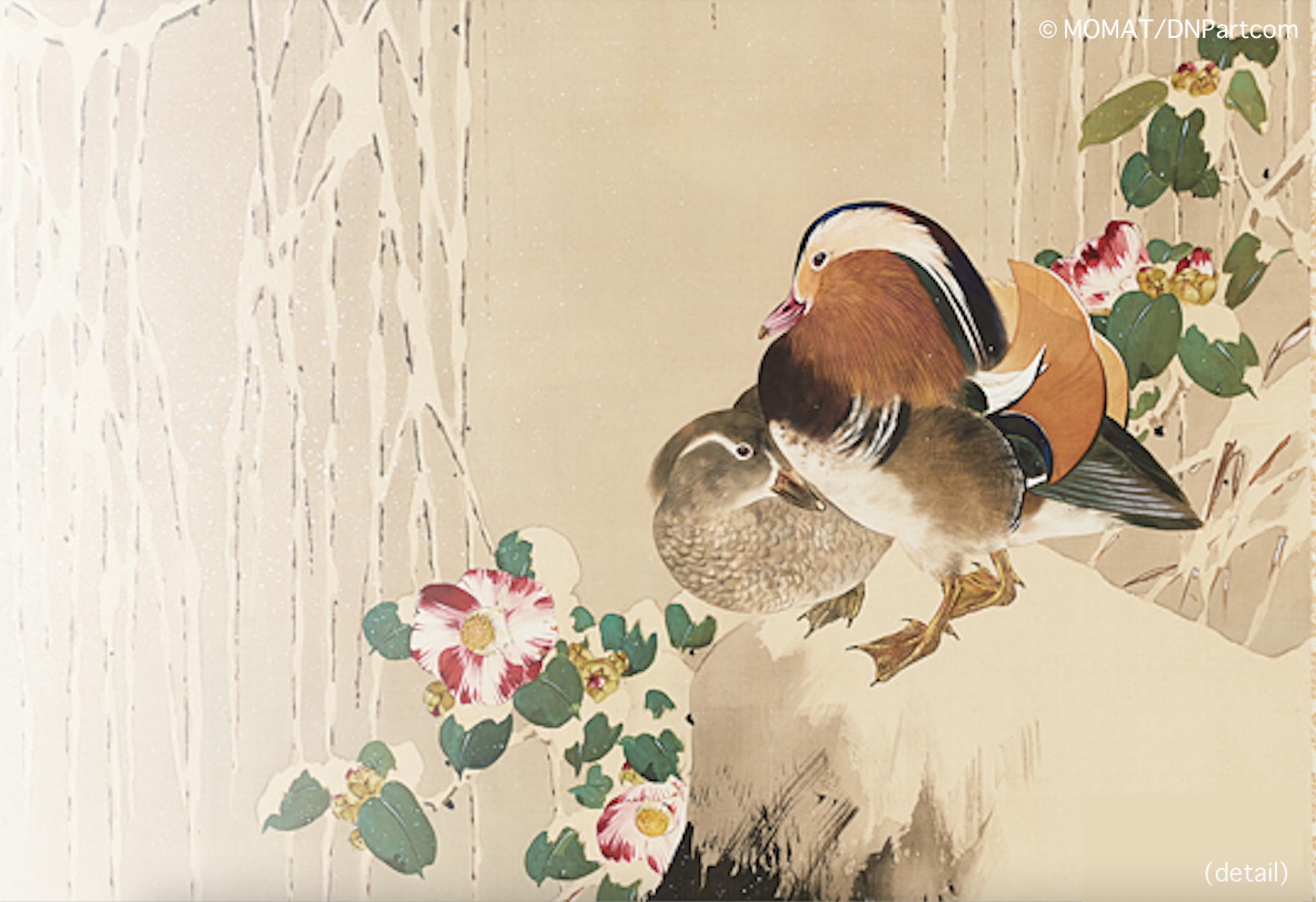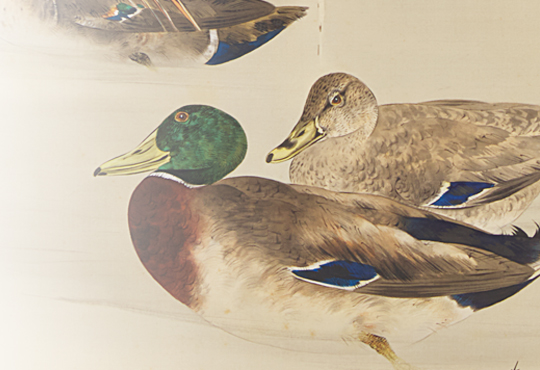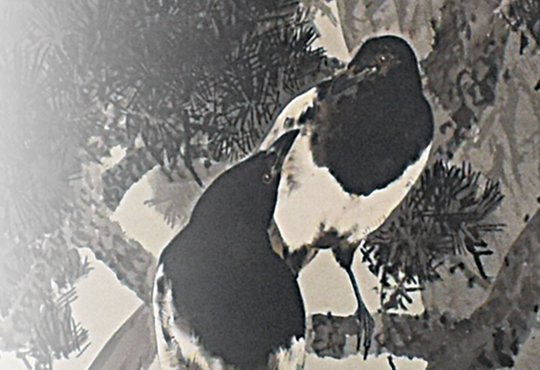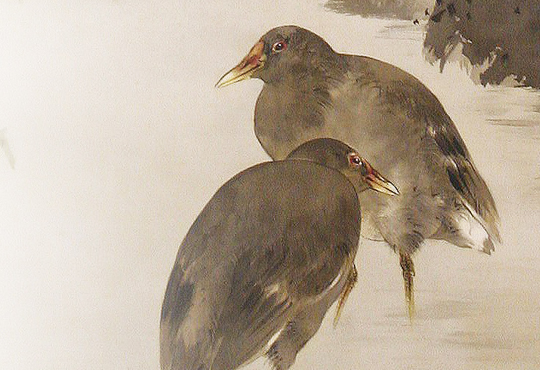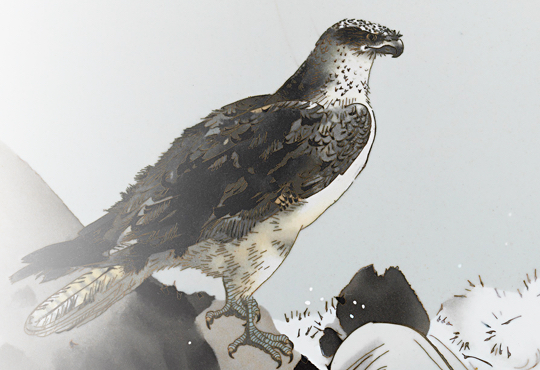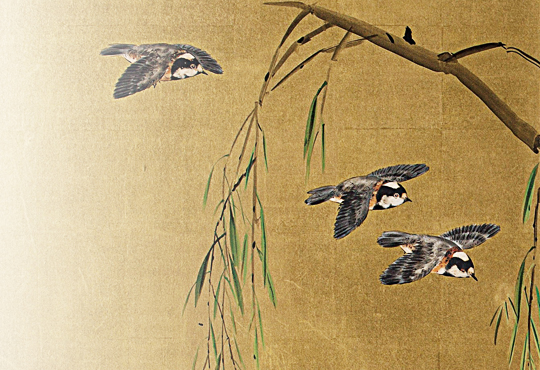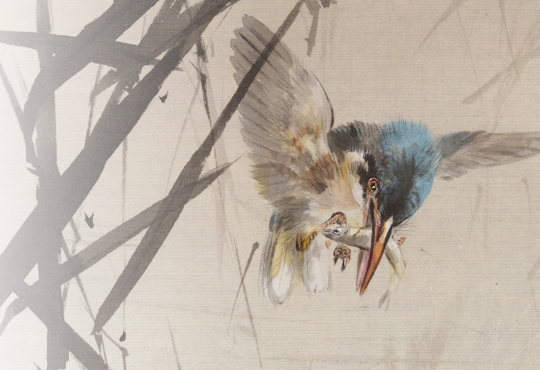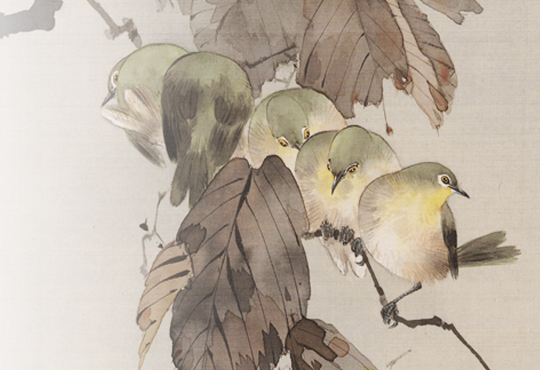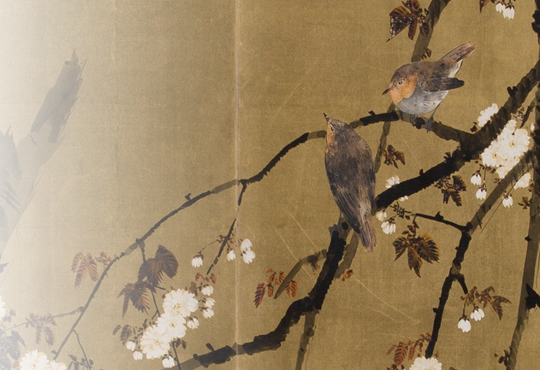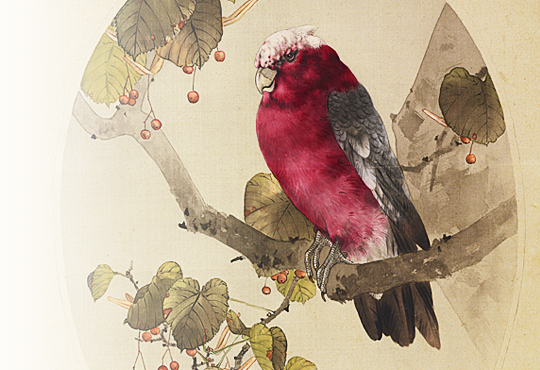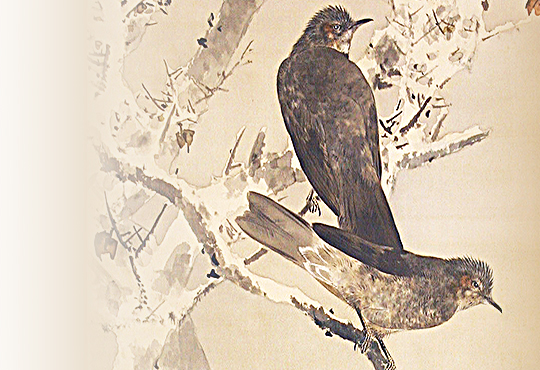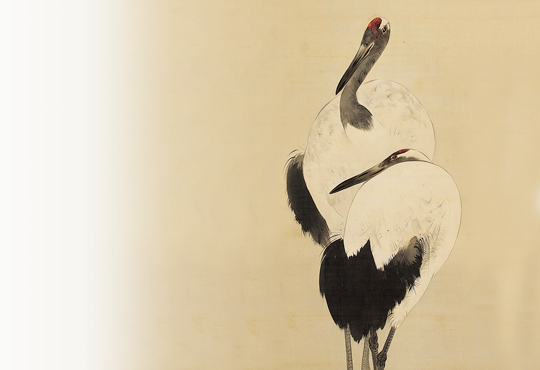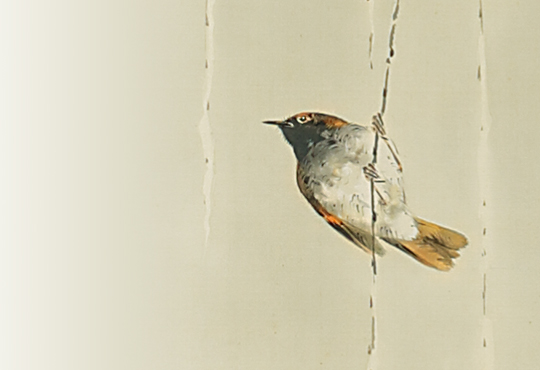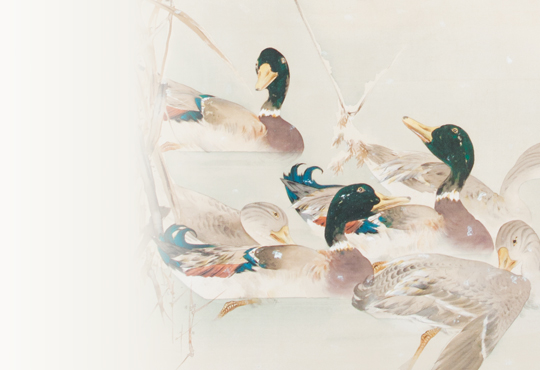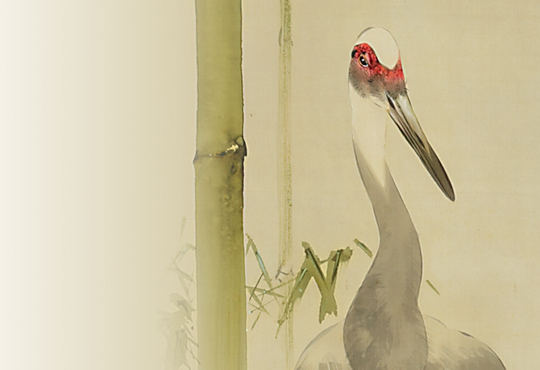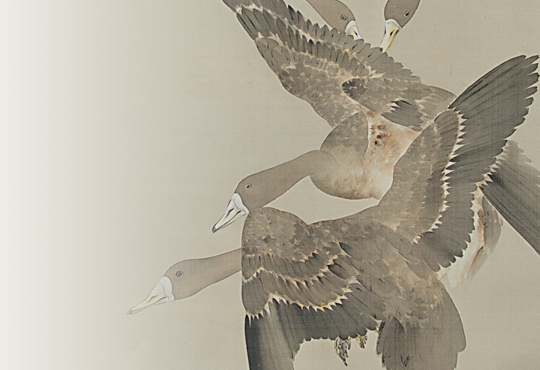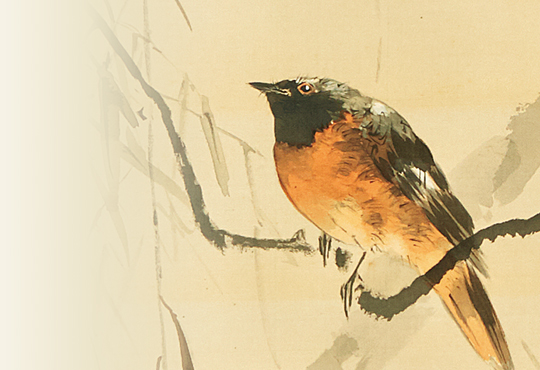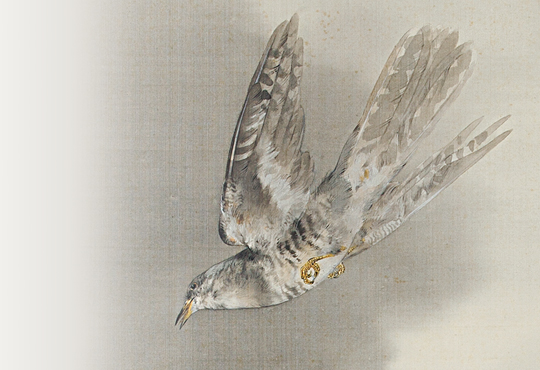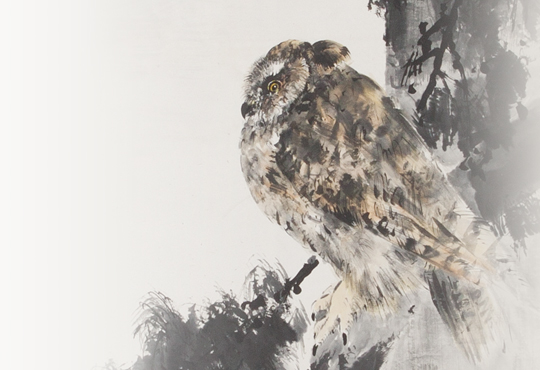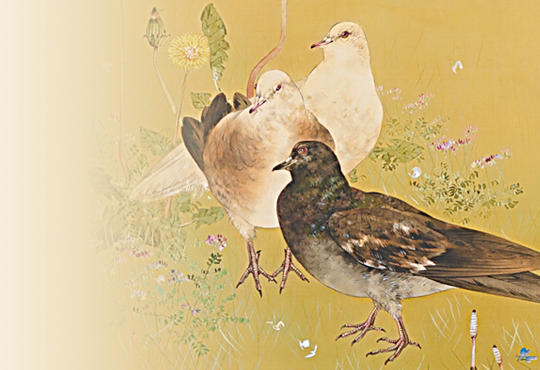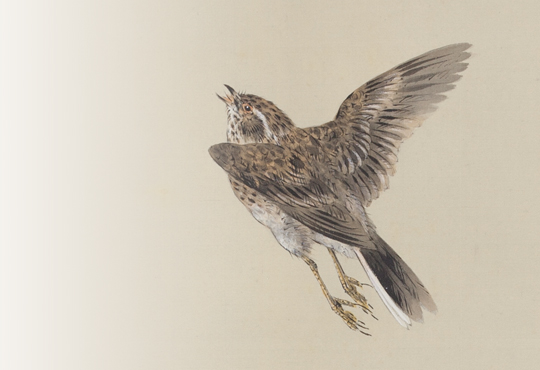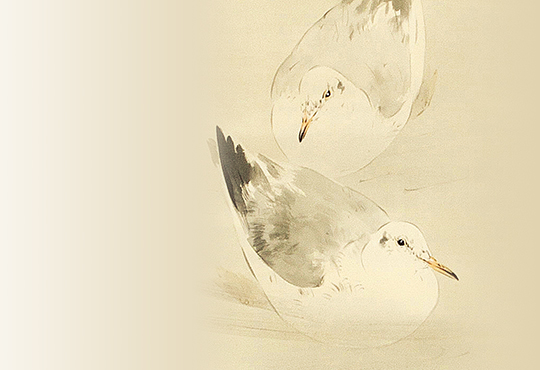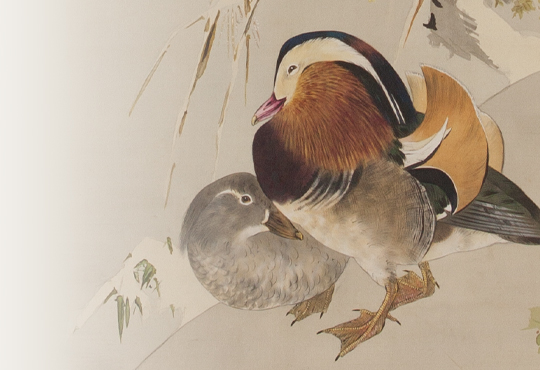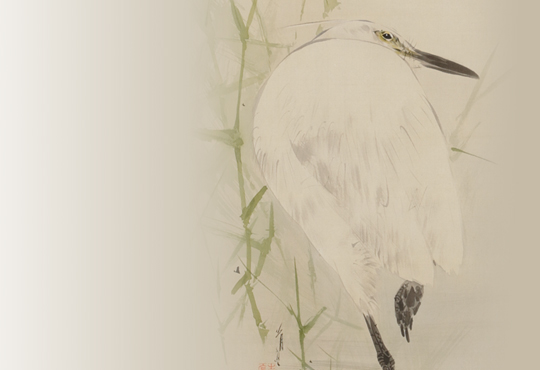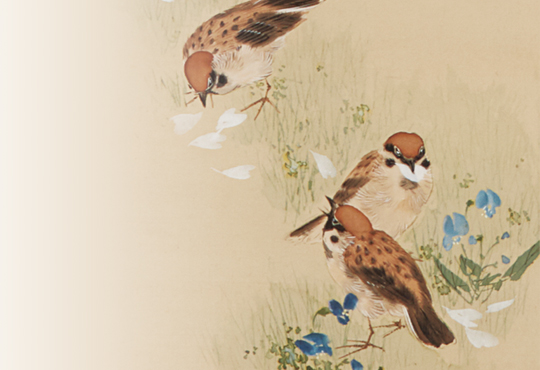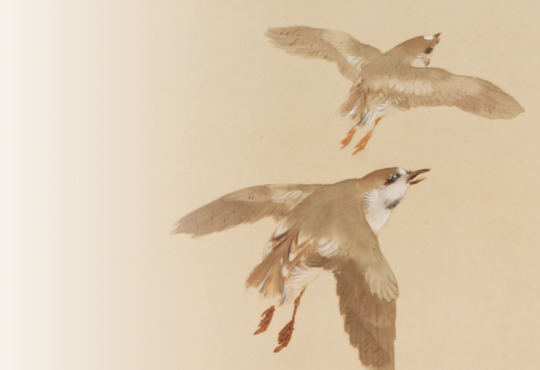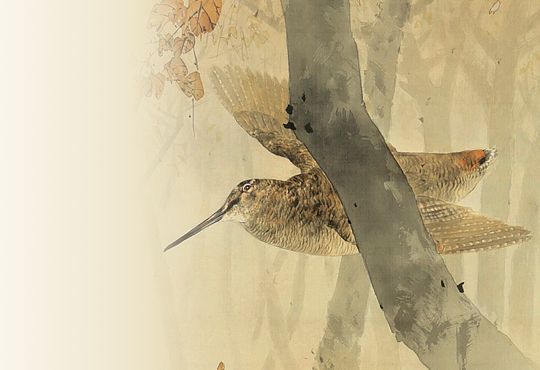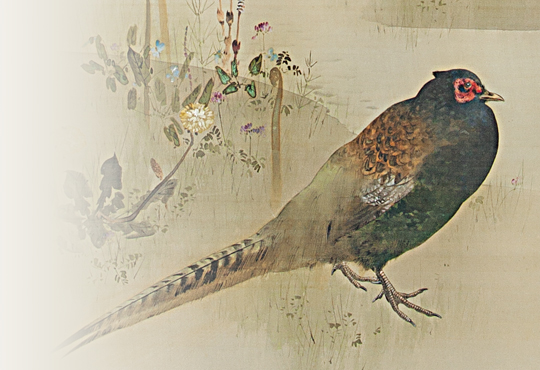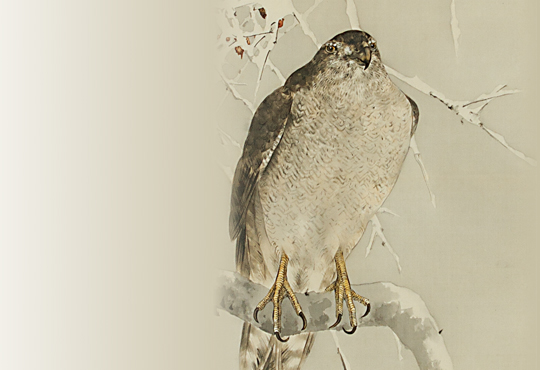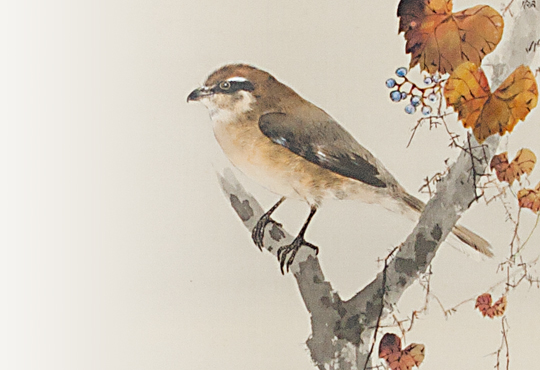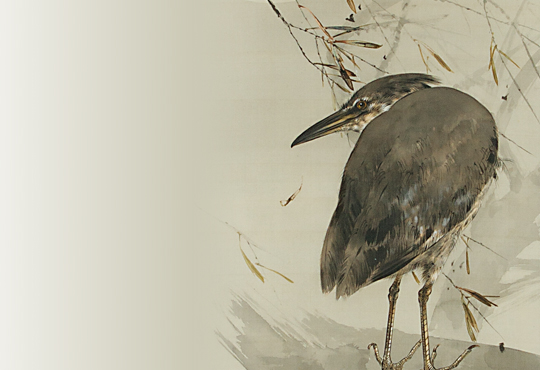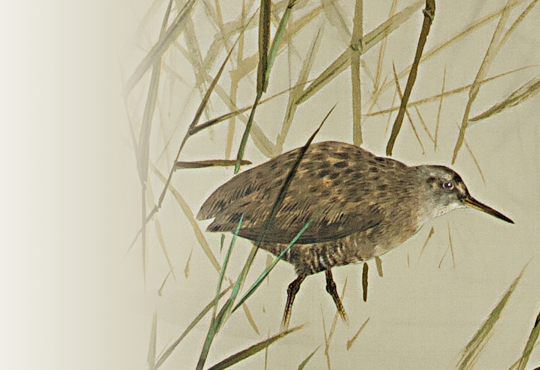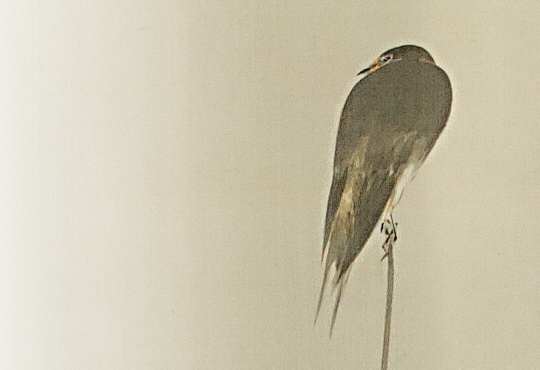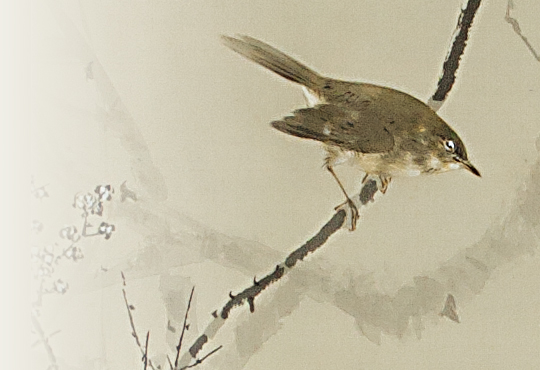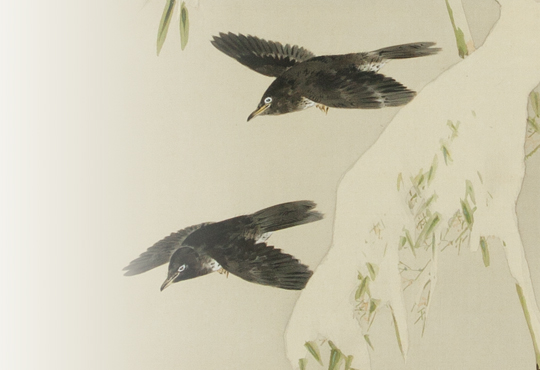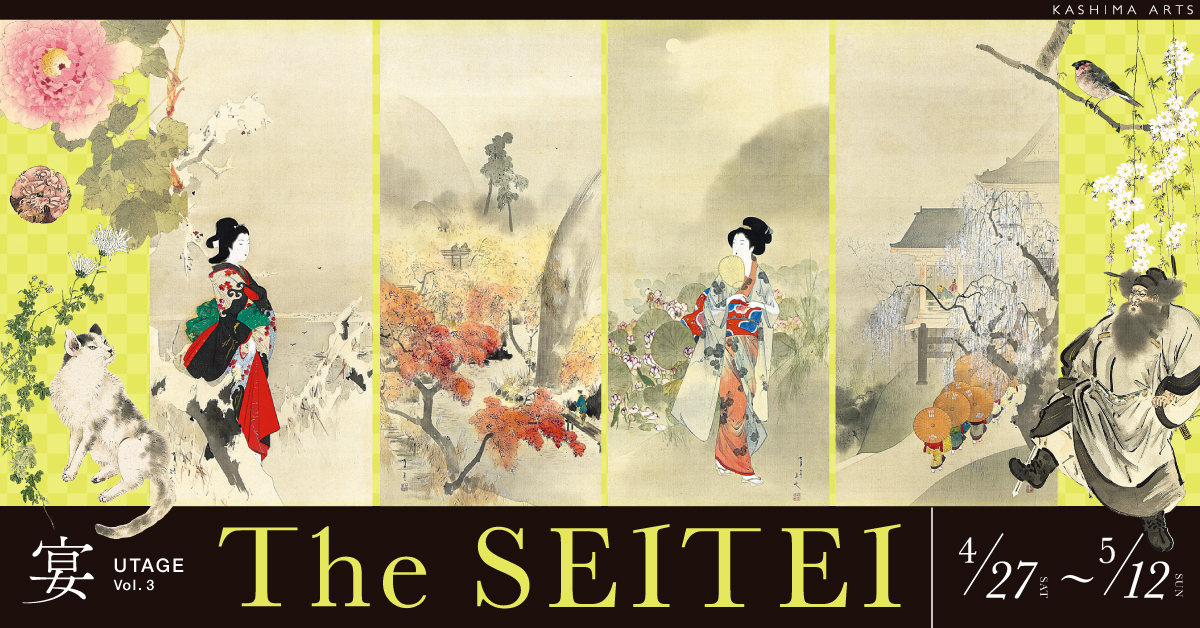vol.19 Named with Malice: Waterfall and Asian House Martin
Our first encounter was at the Kashima Arts “SEITEI Returns!!”: Watanabe Seitei Exhibition of March/April 2017. At the time, I had never even heard of the name Watanabe Seitei and had never even known the greatness of his flower-and-bird painting. Highly recommended by Mr. Noji Koichiro, the Director of the Sen-oku Hakukokan Museum, and “Art Teller” Mr. Tony, who both said, “there’s loads of paintings of birds, you’d like it”, I was led to visit the gallery. With numerous realistic flower-and-bird paintings on display, these vertical hanging scrolls were illuminated by faint light and depicted life-like birds of various species. While these works were unfamiliar to me, each was a masterpiece and had a spectacular lineup of bird-species. In a blink of an eye, I was captivated in mind and vision, and, without hesitation, made rounds around the gallery before I was stopped by a certain work.
The lower part of the waterfall is depicted up close. In the bottom screen, water splashes and violently collides against a rock. As a branch adorned with green leaves extends from the upper right corner, two small birds surface. This piece is titled, “Waterfall and Asian House Martin” however they are not house martin. Rather, they are White-throated Needletail, boasting the fastest flight speed in the world, they are the champions of the avian world. Past or present, East or West, perhaps this is the first and, maybe, the last painting where these birds will be depicted.
The White-throated Needletail (body length 20cm; wing span 52cm) is a large swift that breeds around the Himalayas and East Asia. With their short thick torso and very slender wings, they resemble a crescent moon or a boomerang when they fly. A pointy rachis (the spine of a feather) sticks out from the end of its tail, resembling a needle. This “needle tail” is said to be the source of its name and is understood as having the function of supporting its body when the swift perpendicularly rests on a tree stem. They nest in large tree caves and fly wide distances over forests at high speeds. Their maximum speed is said to reach 170km/h and they catch flying insects in air. They are a species with a low population that is only seen occasionally, flying at high speeds from up high in the sky, so there are very few opportunities to observe these birds and their behaviors up close.
What caught my eye was the astonishingly realistic depiction of the White-throated Needletail. Not to mention its characteristic long wings, the work further captures the shape of its short and thick body and the subtle “needle” at the tip of its tail. Its wings and tail have a blue-black shine while its head, back, and belly are a dull blackish brown. Its neck and rump are painted white and the work even captures the white gradation of its tertiary flight feathers. Nonetheless, while the real bird would have been whitish in the back, in this work it is depicted in a pale blackish brown. What astute observation, visual accuracy, and what an ambitious and masterful choice to choose the White-throated Needletail as a subject! I was convinced that Watanabe Seitei was an unusually enthusiastic lover of birds like myself.
But why is this work named “Waterfall and Asian House Martin”? An avid bird lover would not have mistaken naming a bird he drew, so did an unknowing third-party haphazardly title the work? On the other hand, Seitei might have named the work himself. If so, this title would have been made with “malice”. Normal viewers would not have recognized these birds as White-throated Needletails, so the title, “Waterfall and Asian House Martin”, would have been taken at face value. The same goes for art critics and dealers, who appreciated paintings. Their comments on the work, whether on its “excellent photo-realism” or the “realism lost because of its extreme attention to detail,” reveals how these evaluations of realism in flower-and-bird paintings are, whether right or wrong, unscientific and egotistical. How could such ignorant people understand whether a work is good or bad? Thus, the “malice” which Seitei embedded in the title may have been an expression of his resentment and rebellion against those who, with ignorance and with no shame, praise and critique his work. Perhaps Seitei wanted to sneak a laugh in with bird lovers who “know the difference”, by parodying the art critics and dealers who “know-it-all”.
This is the story of when I first met Watanabe Seitei. Although it has been more than 2 years since then, my impression remains the same. If I ever had the chance to share a few drinks of sake with him, I would like to laugh over this story of “malice” together.
Author : Masao Takahashi Ph.D. (Ornithologist)
Dr. Masao Takahashi was born 1982 in Hachinohe (Aomori prefecture) and graduated from Rikkyo University’s Graduate School of Science. Dr. Takahashi specializes in behavioral ecology and the conservation of birds that inhabit farmlands and wet grasslands. Focusing on the relation between birds and art, he has participated in various museum and gallery talks.
